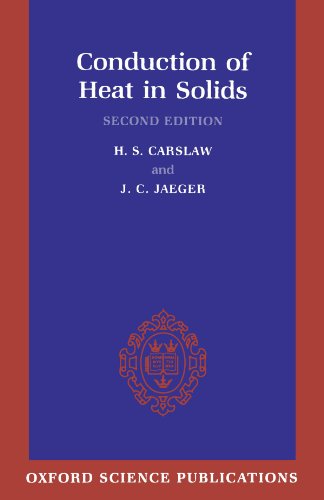Conduction of Heat in Solids pdf
Par fisher carla le samedi, décembre 31 2016, 08:46 - Lien permanent
Conduction of Heat in Solids by H. S. Carslaw, J. C. Jaeger


Conduction of Heat in Solids H. S. Carslaw, J. C. Jaeger ebook
Publisher: Oxford University Press, USA
Format: djvu
Page: 517
ISBN: 0198533683, 9780198533689
General Principles of Modeling Heat Transfer: . Analytical Methods for Heat Transfer. There are three main forms of heat transfer which are commonly referred to within the process engineering industry: Conduction. The greatest flow of heat possible between materials is where there is a direct conduction between solids. You can then apply the principles of Carlaw & Jaeger's 1947 Conduction of Heat in Solids to come up with an estimate for the cooking time. Thermal conductivity is a property derived in cases where conduction mode of heat transfer is studied and conduction of heat occurs through non flow motion of molecules example as solids where the molecules are not free to move. In solids, this transfer is called conduction. Jaeger I need "Conduction of Heat in Solids by H. It is also an efficient method of conduction in liquids, but occurs hardly at all in gases. More energetic molecules in a hot substance collide with less energetic molecules in a colder substance, transferring energy and therefore heat. Thermal energy moves in three different ways: by conduction, convection and radiation. The Solution of Heat Conduction. An example of conduction through contact between two solids is a cooking pot on the solid surface of a hot stove. ΔT = temperature difference between two systems. The concept of air sealing ties in with how insulation works and how heat moves. This is the primary method of heat transfer in solids and it works best of all in metals (because loosely bound electrons play a role).